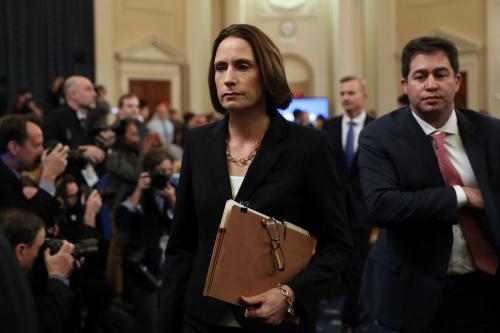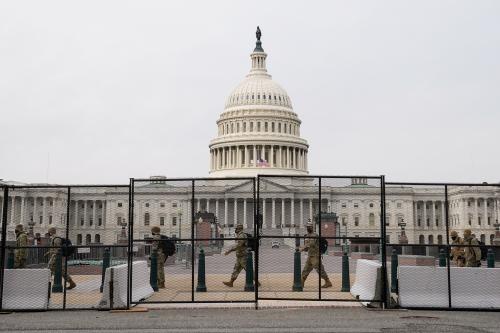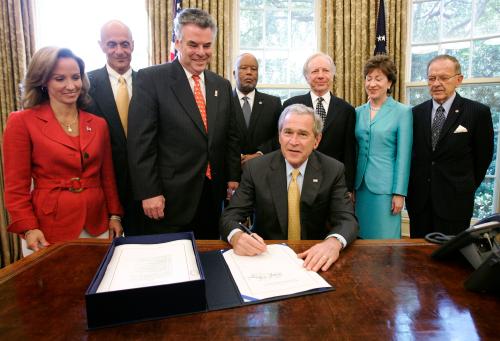The U.S. military intervention in Afghanistan, which began in 2001 as a presumably swift regime-change operation to drive the Taliban from power, morphed by the mid-2000s into a full-blown counterinsurgency against the Taliban’s effort to retake control of the country. In 2009, the Obama administration inherited the U.S. and international mission there in a condition of deep crisis. The Bush administration’s economy-of-force, minimal-input approach for Afghanistan, and its prioritization of Iraq, had left a structural environment in Afghanistan that motivated national and local powerbrokers to return to their ways of narrowly pursuing immediate power and profit maximization at the expense of building effective and accountable governance. Although the Obama administration tried to reverse these negative dynamics, its imposition of a time limit on the deployment of U.S. forces only reinforced the short-term, what’s-in-it-for-me calculus of the Afghan powerbrokers. The result has been a continuing uphill struggle to devise mechanisms to improve governance and sustain security gains. Henceforth, and still prevailing at the time of this writing, the United States and its allies have been struggling with a fundamental predicament: The Taliban insurgency feeds on the condition of inept and corrupt governance; yet the United States and its international partners have been unable to induce better governance from the Afghan government and unofficial powerbrokers.
Consequently, although the U.S. narrow counterterrorism objectives of deposing the Taliban and disrupting al Qaeda might seem to be accomplished, the success of the larger project — establishing a stable and legitimate government in Afghanistan that can deliver security and other essential public goods, and anchoring it in a solid regional arrangement — remains a huge question mark. The Afghan National Army (ANA) is improving as a force capable of providing security to the Afghan population and assuring Kabul’s writ. But whether these improvements will be sufficient before the majority of U.S. troops depart in 2014 is as yet highly uncertain. Meanwhile, political trends and the quality of governance in Afghanistan continue to deteriorate and are increasingly generating pressures that could yet explode in civil war. Thus even observable increases in physical security may not indicate durable stability if Afghans’ confidence in the future does not increase.
This article assesses the effects of U.S. policies adopted in Afghanistan on the quality of governance there. It focuses particularly on the Obama administration that early on elevated Afghanistan to a top priority in its foreign policy. The article highlights the key policy dilemmas, such as ambivalence over fighting corruption, in which even the Obama administration, highly motivated to induce governance improvements in Afghanistan, found itself caught up.



Commentary
The Crucibles and Dilemmas of U.S. State Building in Afghanistan
January 9, 2012